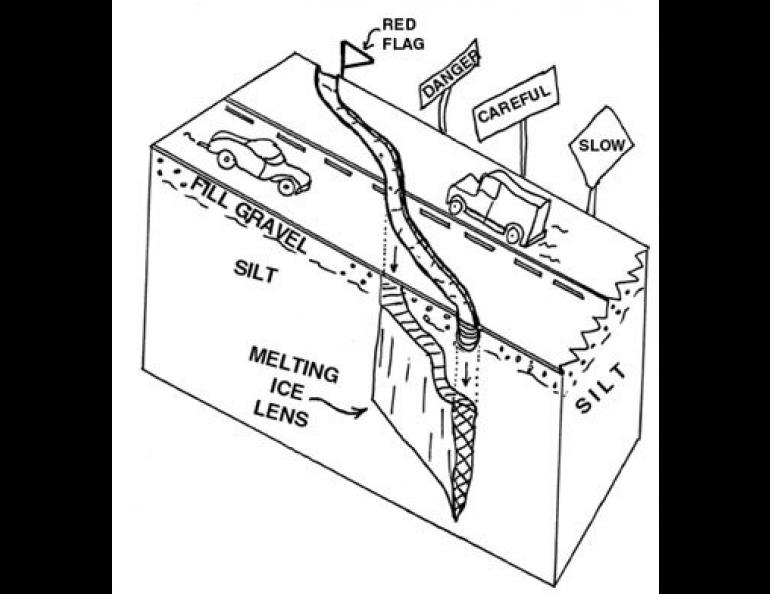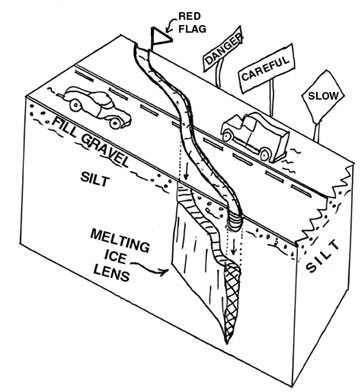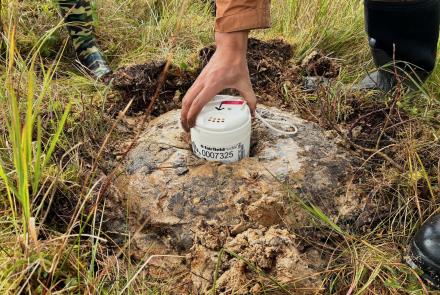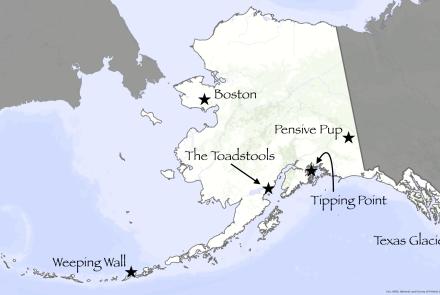
Ice Lenses Versus the Highway Department
Over much of their length, Alaska's highways have, like a wrinkled old man, special character. It is not the horizontal curves that make these roads interesting, it is the ones that go up and down.
It takes the neophyte Alaskan driver only one broken axle or battered head to realize that a DIP sign usually means business. If there is a SLOW sign and a DIP sign, be extra careful. And if, in addition, there is a yellow sawhorse beside the road, it may be wise to get out and walk ahead of the car before proceeding onward.
The culprit is usually the thawing of ground ice beneath the highway. In some permafrost areas crossed by roads, there are extensive near-surface sheets of ice that have been formed over hundreds or thousands of years. Several feet of settling can occur within the few years following the removal of tree and moss cover that previously protected the ice from the sun's heat.
Sometimes the roads cross over near-vertical ice lenses which are usually less than a meter (three feet) across but several meters tall. Thawing of these lenses allows extensive settling of the roadway overhead.
In the years before blacktop, the Alaska Road Commission personnel used to decorate the resulting ditches with red flags; sometimes they shoved more gravel into them. Nowadays the solution is to add more blacktop to these precipitous trenches across the roadway. In some places so much blacktop is poured in over the years that extended stalactite-like sheets of tar have been built up below the road surface.




